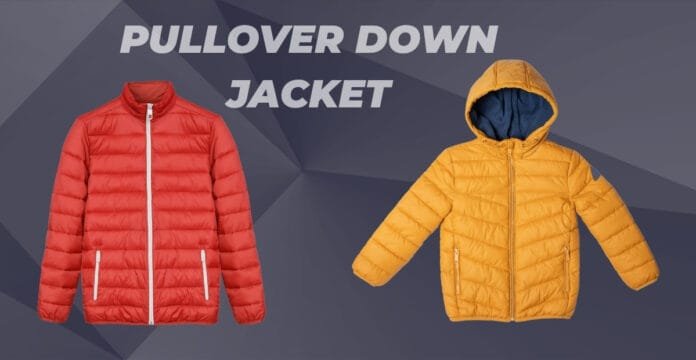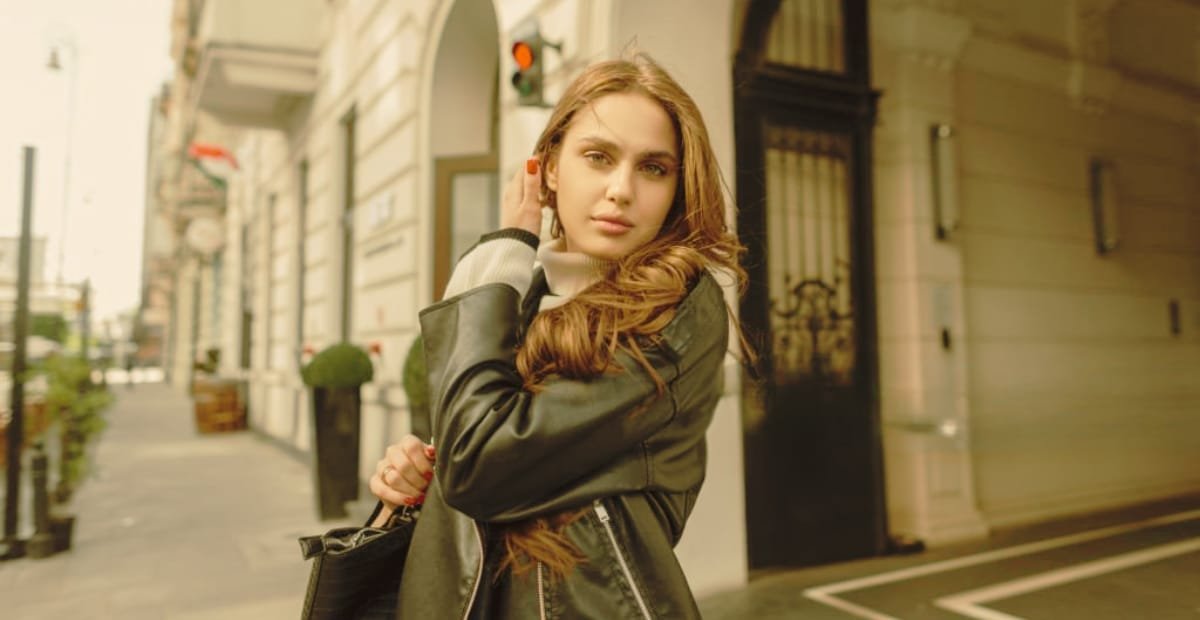When winter arrives, we look for three things: heat, comfort, and a bit of flair. The pullover down jacket answers all of those desires at once. Its sealed seams and lofty down insulation lock in warmth and keep icy gusts out. Whether youre commuting downtown or tackling a snow-dusted trail, the jacket reliably defends against chill.
Despite the serious protection, the jacket remains feather-light, a quality most skiers and city dwellers prize. The down clusters work harder than thicker fabrics because they trap air so efficiently. Add in the roomy, slip-on silhouette, and youve got a piece that lands somewhere between casual, sporty, and cutting-edge.
Sliding it on is a breeze: simply pull it over your head, tighten the collar, and zip. There’s no fiddling with loose buttons or digging through extra base layers. In seconds you’re ready to step outside. For many of us, the pullover down jacket quickly becomes the go-to cold-weather armor. Now lets dive into the features that make it a must-have this season.
Why the Pullover Design Matters
Think about how often wind slips through a jacket front ZIP. That annoying draft is the reason many people prefer pullovers for rough weather. Because the pullover down jacket zips only partway up, it closes much tighter around the neck and torso. The pullover style sidesteps most zipper headaches. Think of all those times a stiff pull snagged or the tab snapped just as you reached the trailhead—frustrating, right? With this design, you slide it over your head and the collar settles snugly, leaving one less thing to worry about. The fabric moves with you whether you’re carving turns or rushing the bus. Pair that easy motion with fine stich detailing and subtle matte panels, and the jacket crosses over from trail gear to streetwear without skipping a beat. If you want a piece that actually bridges workdays and weekends, you just found it.
Down Insulation: The Secret to Warmth
Under the shell of every Pullover Down Jacket is a cloud of down—tiny, wind-resistant feathers that belong to ducks or geese. Because they compress into soft, airy pockets, they trap heat far more efficiently than polyester batting ever could. The magic lies in the balance of weight to warmth: slip it on and you feel cozy almost instantly, yet the jacket packs small enough to tuck into a mid-sized backpack when the sun breaks through. Many owners report five, even ten winters with the same piece if they steer clear of campfire sparks and saltwater pools. That long lifespan, combined with barely-there heft, makes the Pullover Down Jacket a wise buy for anyone who braves icy sidewalks and snowy trails.
How to Style a Pullover Down Jacket
You really don t have to choose between looking sharp and keeping warm. A pullover down jacket lets you do both at once. Start with slim jeans or clean joggers. Pop on a thin wool beanie or loop a scarf around your neck. Finish the look with sturdy boots or high-top sneakers. Pick a bold hue if you want your jacket to steal the show. Black, dark green, or deep navy still give the classic vibe while matching nearly everything. On extra-cold days, layer the jacke t over a lightweight hoodie or thin knit sweater for even more insulation. For a relaxed weekend, team it with tapered sweatpants and cushy sneakers. Coffee date on the schedule? Toss it over a checked flannel and straight-leg jeans. However you choose to wear it, the pullover down jacket will fit the winter mood.
Best Fabrics for Pullover Down Jackets
The fabric you touch matters more than you might think. A quality pullover down jacket starts with tough, windproof material. Nylon and polyester show up most often because they resist water and keep the down evenly spread. On chilly mornings you will really appreciate a soft inner lining. Shells also receive a water-repellent finish that helps guard against light rain or unexpected snow. That mix of features gives comfort even when weather takes a turn. Several high-end models come in ripstop fabric. This weave resists snags and rips, so the piece holds up season after season. With that added durability, the jacket looks fresh long after purchase. Always glance at the material tag before buying your next Pullover Down Jacket.
When to Wear a Pullover Down Jacket
Colder days beg for warm layers. The Pullover Down Jacket shines once the mercury dips. Toss it on for quick errands, long dog walks, or snow-covered hikes. The lightweight fill traps heat yet lets you move freely. Its travel friendly, too. It squishes small in a backpack and hardly adds weight, making it a go-to for winter trips. On top of that, the clean lines look sharp in vacation photos. Because the cut stays trim, you can slip it on inside while waiting for groceries or standing at a chilly bus stop. From outdoors to brief indoor stints, the Pullover Down Jacket adjusts to almost any cold scenario.
Choosing the Right Fit
Fit matters more than brand. Your Pullover Down Jacket should hug through the shoulders and chest, almost like a close base layer. That snugness keeps drafts out and holds warmth in. Still, leave enough room to slide a thin merino or fleece underneath when the wind really howls. First step is to check the shoulder seams. They should sit flat and square, not droop or ride up. After that, look at the sleeves. They ought to stop right at your wrist bone. The jacket hem should rest just below your natural waist. If the model has a hood, put that up as well. It needs to clear any hat or beanie you plan to wear. And always give yourself a little jiggle-raise your arms, twist your torso, bend your knees. Movement tells you much more than standing still ever can.
Caring for Your Pullover Down Jacket
Keeping a Pullover Down Jacket healthy starts with avoiding the wash cycle every week. For tiny marks, a damp cloth or baby wipe usually does the trick. When the whole shell really needs cleaning, read-and obey-the label inside. Most down pieces do best washed in cold water on a delicate cycle. Use a detergent formulated for feathers, never bleach or heavy additives. After the wash, toss the jacket into a low-heat tumble with two clean tennis balls. They stir the fill and prevent clumps. Finally, store the coat in a cool, absolutely dry spot. Avoid squishing it inside bins for long stretches. Let the fabric air out so the down can poof back to life. Mindful care gives your Pullover Down Jacket many more seasons of reliable warmth.
Weatherproof Features Youll Love
A quality Pullover Down Jacket does more than hug you with warmth. Its also a mini fortress against the weather. Most models come with a water-repellent or fully waterproof shell, so rain or melting snow cant creep in. Many best jackets add elastic cuffs to block icy drafts, while handy drawstring hoods and adjustable hems let you seal off any lingering gaps. With these little extras, you stay dry, warm, and comfortable for hours on end. Zippered kangaroo pockets seal the deal, warming your hands and stashing keys, snacks, or a phone. Whether its drizzling, dumping snow, or gusting wind, your Pullover Down Jacket stands tall against whatever nature throws your way.
Comparing Pullover to Zip Jackets
Zipping jackets line store racks from city streets to ski resorts, so why even think about a Pullover Down Jacket? Because that missing zipper cuts down on draft channels and gives a smooth, minimalist silhouette many people love. Without a long front zip, the pullover actually feels lighter on the body and stays put better when you reach, bend, or climb. Adventure athletes swear by that extra freedom of movement, and for some the style just reads sporty rather than technical. Of course zippers arent going extinct- theyre great for quick ventilation or getting the jacket on and off in seconds- but give the Pullover Down Jacket a fair test and you might find its the fresh feel you never knew you needed.
Top Color Trends for Winter 2025
Fashion moves on, yet some hues feel right each winter. For 2025, strong, earthy tones take center stage. Picture forest green, rich burgundy, and charcoal gray. These colors layer beautifully over knits and under coats. Brighter shades-easy-going tangerine, royal cobalt, even blush-pull eyes and keep spirits high. On a snowy street, a vivid Pullover Down Jacket shines above the usual sea of black. Fans of understated looks can stay loyal to warm beige, deep navy, or classic black. Those palettes never really fade and go with almost anything. Pick a shade that feels like you, then wear the jacket with true confidence.
Conclusion
Every winter closet needs a stand-out piece, and the Pullover Down Jacket earns that title. It marries cozy down warmth, wind-blocking tech, and fresh, urban style in one package. Because of its simple design, the jacket shifts easily from morning errands to weekend hikes. Lightweight insulation traps heat but never feels heavy over a sweater. Zip up the high collar, tuck in your chin, and the cold can try its best-the jacket wont budge. So, let the forecast dip, and rise above it in a look that keeps you moving, warm, and undeniably on-trend.
FAQs
What is a Pullover Down Jacket?
A Pullover Down Jacket is a winter jacket you wear over your head, not zipped fully in front. It’s filled with down insulation for maximum warmth and comfort.
Are Pullover Down Jackets warmer than zip-up jackets?
Yes, a Pullover Down Jacket often provides better warmth because it blocks cold air more effectively than a full-zip style.
How should I style a Pullover Down Jacket?
You can style your Pullover Down Jacket with jeans, joggers, or even snow pants. Add boots, a beanie, and a warm scarf for a full winter look.



